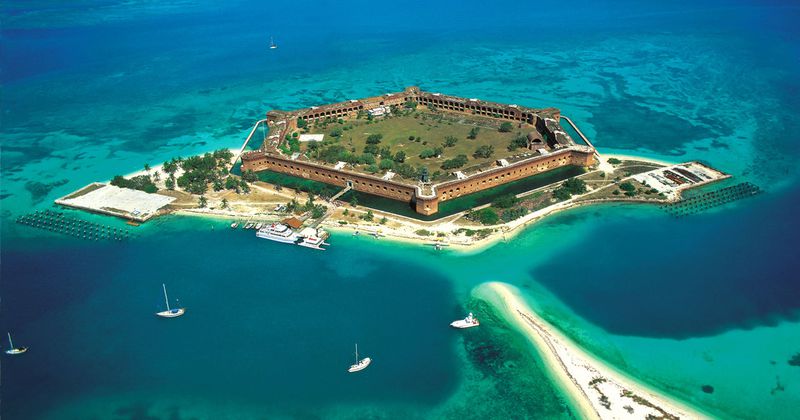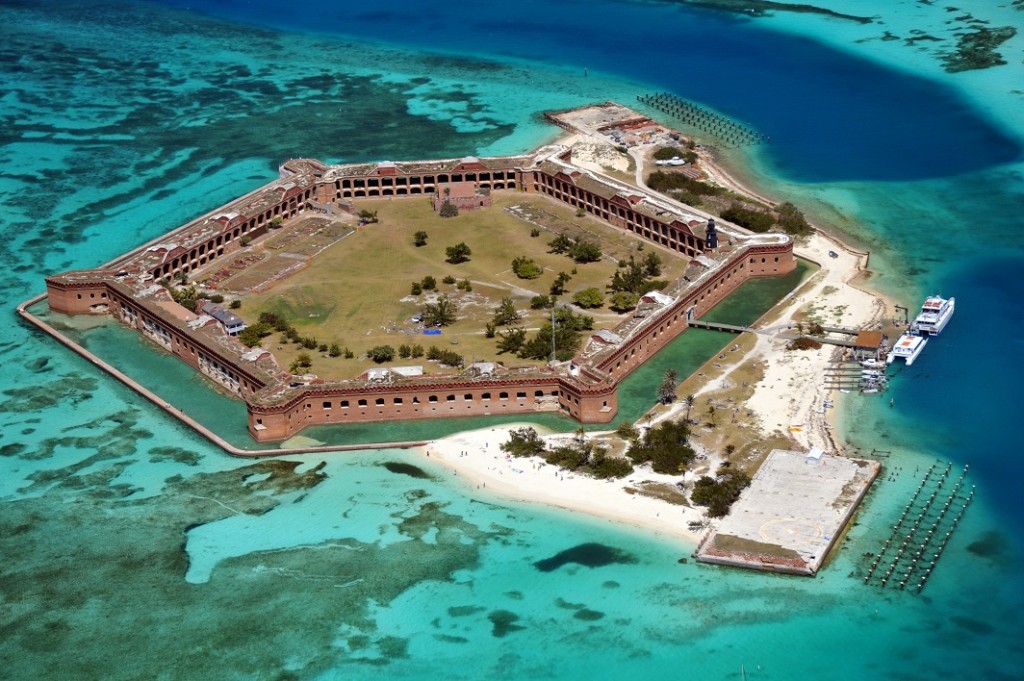The remote island of Dry Tortugas near the coast of Florida is famous for its history, as the abode of sea turtles, sunken treasure and one of the world's largest coastal stone fortresses.
 |
Juan de Leon Pond was the first who discovered the island in 1513, when he was nothing more than a group of corals populated by sea turtles. Initially, de Leon named the island of Las Tortugas, which translates as Turtle Island. Dry prefix, which means "dry", was added later, as an attempt to warn sailors of freshwater shortage.
 |
After the opening of it, the Dry Tortuga became a mark on Spanish maps for traders and explorers, a landmark on the way to the coast. The island is located right between the Gulf of Mexico and Atlantic Ocean.
Dry Tortuga has also become a place of shipwrecks. The shallow waters, strong currents and dangerous weather conditions gave the island the name "trap for ships". Rumor says that to this day a large number of sunken treasures lying on the seabed in these areas.
 |
The fortress on the island was founded in 1822, and a naval base was established, helped to fight piracy in the Caribbean. After years of planning, in 1847 the construction of a massive fortification hexagonal shape with 420 loopholes for heavy guns has begun. The height of the walls above the sea level is 15 meters, the castle is surrounded by a moat 23 meters wide. Although the construction has continued for decades, so the fort was never completed. Despite this, there were 16 million bricks laid, making Dry Tortuga one of the large coastal ports ever built.
 |
During the Civil War the Dry Tortuga was used as a prison, and the most famous prisoner here was Dr. Samuel Mudd, convicted of conspiracy and the assassination of President Abraham Lincoln. The fort was abandoned by the military in 1874, then served as a coal station, a quarantine hospital, and only in 1935 received the status of National Monument. Now this place is called the Dry Tortugas National Park.